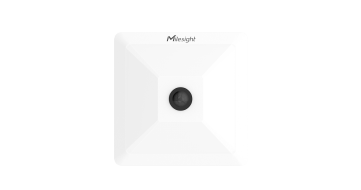Understanding Occupancy Sensors:
A Comprehensive Guide to
Building Automation


In today's era of smart buildings and energy efficiency, occupancy sensors have become an indispensable component of modern building management systems. These intelligent devices are crucial in automating lighting, HVAC, and other systems while significantly reducing energy consumption. This comprehensive guide explores everything you need to know about occupancy sensors, their various types, and their applications in building automation.
What Are Occupancy Sensors?
Occupancy sensors are smart devices designed to detect the presence or absence of people within a defined space. Based on space utilization, they automatically control various building systems, making them essential components in energy-efficient building design and automation.
Types of Occupancy Sensors and How They Work
Different technologies are applied in occupancy sensors, each with its advantages and specific use cases. Here are the main types of occupancy sensors and their working principles.
1. Passive Infrared (PIR) Sensors
Passive Infrared sensors are among the most commonly used types of occupancy sensors in commercial buildings. They have a pyroelectric element that detects changes in heat emitted from human bodies. When people walk through the sensor's field of view, it detects motion in infrared energy and triggers connected systems. It works best when it has a clear view of the moving person, as it relies on a direct line of sight.
Key features of PIR sensors:
- Non-intrusive detection method
- Excellent for detecting major movements
- Cost-effective implementation
- Ideal for homes, offices, and small spaces like conference rooms
- Limited by line-of-sight requirements
2. Ultrasonic Sensors
Ultrasonic occupancy sensors continuously emit high-frequency sound waves and analyze the frequency of the bounce-back waves. Any movement within the area alters the frequency, which the sensor detects and interprets as occupancy. These sensors are commonly used in larger or more complex spaces, particularly effective in spaces with obstacles or partitions.
Advantages of ultrasonic sensors:
- Can detect minor movements
- Not limited by line-of-sight
- Effective in irregular spaces
- Suitable for bathrooms and enclosed areas
- Higher sensitivity compared to PIR sensors
3. Dual-Technology or Hybrid Occupancy Sensors
These occupancy sensors use two or more technologies, typically PIR and ultrasonic, to provide more accurate occupancy detection while minimizing false triggers. They are ideal for challenging environments with variable occupancy patterns where reliable occupancy and high-frequency detection are critical.
4. Microwave Sensors
Microwave occupancy sensors emit microwave signals and detect changes in the reflected signals caused by movement. They are highly sensitive and can detect even the slightest motion from a long distance, suitable for hallways and large open areas.
Characteristics of microwave sensors:
- High sensitivity to movement
- Ability to penetrate non-metallic materials
- Suitable for large areas
- Effective in extreme temperatures
- Higher cost compared to other options
5. Time-of-Flight (ToF) Sensors
Time-of-flight sensors represent the latest advancement in occupancy detection technology. ToF occupancy sensors emit a light pulse (often infrared) and measure the time it takes for the light to reflect from an object so that they can accurately detect how many people are present. Moreover, they provide accurate occupancy data without compromising privacy.
Key advantages of ToF sensors:
- Highly accurate distance measurements
- Precise occupancy tracking
- Privacy-compliant people counting
- Effective in varying light conditions
- Three-dimensional space mapping
6. RGB/Camera Occupancy Sensors
RGB occupancy sensors detect presence by analyzing changes in the RGB light spectrum within a space. They provide precise motion detection to reduce false alarms and enhance security by accurately distinguishing between human movement and other activities. These devices provide rich visual data while maintaining privacy through sophisticated processing algorithms.
Features of RGB/Camera sensors:
- High-resolution occupancy detection
- Advanced behavior analysis capabilities
- Heat mapping functionality
- Privacy-preserving image processing
- Detailed movement pattern analysis
7. AI-Enhanced Occupancy Sensors
AI-based sensors, when paired with other technologies, use machine learning to analyze data from different sources. This increases detection accuracy and reduces false alarms. It also helps the system adapt to changes in the environment, making occupancy sensing more reliable. For example, the Milesight VS121 AI Workplace Occupancy Sensor achieves an accuracy level of up to 98%.
Benefits of AI-enhanced sensors:
- Advanced pattern recognition
- Predictive occupancy modeling
- Adaptive learning capabilities
- Multi-sensor data fusion
Utilizing different sensing technologies, Milesight offers a range of advanced occupancy sensors for diverse needs.
Click to see the comprehensive comparison guide of Milesight Occupancy Sensors>>>
Comparison of Key Occupancy Sensing Technologies
| Technology | Common Applications | Advantages | Considerations |
|---|---|---|---|
| PIR (Passive Infrared) | Offices, Workstations Restrooms, Libraries |
|
|
| Ultrasonic Occupancy Sensors | Restrooms, Libraries, Hospital Patient Rooms |
|
|
| Microwave Occupancy Sensors | Parking Lots and Garages, Warehouses, Outdoor Security |
|
|
| Dual-Technology | Offices, Schools, Hospitals |
|
|
| Time-of-Flight (ToF) Sensors | Smart buildings, Airports, Retail |
|
|
| AI | Smart buildings, Retail, Hospitals, and Health Care |
|
|
The Use of Occupancy Sensors in Various Spaces
Understanding how occupancy sensors function in different environments is crucial for optimal implementation and performance. Each space type presents unique challenges and requirements that influence sensor selection and configuration.
Workplaces
Commercial Buildings & Offices
In open-plan areas, sensors must accurately detect presence across large zones while preventing interference between adjacent workstations. Private offices and executive spaces require more focused detection capabilities. Meeting spaces present unique challenges, requiring sensors that can detect subtle movements during extended presentations or strategy sessions. Corporate offices also benefit from occupancy analytics that helps optimize space utilization and inform long-term real estate decisions.
Coworking Spaces/Public Office
These environments require highly flexible sensing solutions that can adapt to rapidly changing space configurations and diverse user behaviors. Hot-desking areas need granular detection capabilities to track individual workspace utilization, often employing desk-level sensors integrated with booking systems. Common areas and breakout spaces require sensors that can handle unpredictable occupancy patterns while maintaining accurate detection. Phone booths and small meeting pods benefit from individual sensors that manage both lighting and ventilation based on actual usage.
Conference Rooms
Occupancy sensors can integrate with room booking systems to release rooms that are booked but not in use. It prevents "ghost meetings" and makes the space available for others. They also help manage resources like projectors and air conditioning, ensuring they are used only when needed. By providing accurate occupancy data, these sensors help maximize meeting spaces and manage more effective meeting schedules.
Retail and Commercial Spaces
Shopping malls, supermarkets, and retail stores can use occupancy sensors for both energy management and customer analytics. Sales floors require comprehensive coverage to track customer movement patterns and optimize store layouts. Businesses can change staffing levels and product placements accordingly, creating the best customer experience even during peak times. It also reduces operational costs during quieter periods. Mall common areas require sophisticated systems capable of handling high traffic volumes while maintaining accurate occupancy counts for building management purposes.
Educational Institutions
Occupancy sensors are beneficial for schools when classrooms and common areas are empty, like after hours. They help save on utility bills while still keeping a comfortable environment for students and staff. The occupancy data also helps school administrators make smart decisions about classroom assignments, resource allocation, and layout optimization.
Classrooms require sensors that can reliably detect presence across the entire room while accommodating various teaching styles and student activities. Lecture halls often need multiple sensors working in concert to provide complete coverage of tiered seating arrangements. Libraries demand particularly sensitive detection capabilities to identify occupancy in quiet study areas where movement might be minimal.
Healthcare Facilities
Besides energy savings, occupancy sensors also enhance patient safety and comfort. Hospitals must comply with various safety standards and regulations. These sensors help monitoring crowd levels in waiting areas and treatment rooms for managing patient flows. Cleaning crews can also use real-time data to focus on heavily used areas during specific times of the day.
Occupancy sensors also help ensure that environmental controls are optimized (e.g., adjusting airflow to reduce infection risks). Some advanced occupancy sensors can detect falls or sudden movements. They trigger alarms that alert healthcare providers to help quickly.
Restrooms
Occupancy sensors are increasingly integrated into restroom facilities to enhance management, improve hygiene, and optimize resource usage.
Occupancy/vacancy sensors ensure that lights are only on when the restroom is in use, significantly reducing energy consumption. They also enhance hygiene and safety by minimizing the need to touch switches. Additionally, integrated sensors can notify maintenance staff when restrooms require cleaning or restocking, ensuring a consistently clean environment. By using occupancy sensors, facilities can also implement visual indicators outside restroom stalls to improve user experience.
Click here for more information on how occupancy sensors can benefit your application>>>
Applications of Occupancy Sensors in Building Automation
Building occupancy sensors serve multiple purposes in modern facilities:
Energy Management
Occupancy sensors save energy by turning systems on or off based on whether people are present. Office systems such as lighting, heating, ventilation, and air conditioning (HVAC) often integrate with them. It not only prevents wasting energy on unused spaces, especially during off-hours or in areas used less frequently but also reduces carbon footprints, supporting businesses in achieving their sustainability goals.
Occupancy sensors help significantly reduce utility costs, lower energy waste, and support sustainable development. Studies show that lighting accounts for 10%-20% of the total energy consumption in commercial buildings. With occupancy sensors, lighting savings can reach 20%-65% in conference rooms, 30%-90% in restrooms, and 5%-35% in open offices.
Space Utilization
Occupancy sensors provide detailed insights into how different areas of a building are used throughout the day, week, and month. This data allows facility managers to monitor space efficiency and adjust space allocation strategies effectively. For example, rarely used meeting rooms can be converted into collaborative zones or additional workstations. It leads to significant savings on rent and maintenance costs.
The technology enables efficient hot-desking management by tracking desk occupancy in real-time, while also providing valuable data for meeting room optimization. Maximized space usage leads to a more satisfying work environment, which can also enhance employee productivity.
Facility Management
In smart buildings, occupancy sensors are essential for improving facility management efficiency. Integrated with Building Management Systems (BMS), these sensors provide real-time occupancy data, automating cleaning schedules and maintenance activities. This integration helps facility managers streamline operations, allocate resources more effectively, and respond promptly to building needs.
Additionally, they enable predictive maintenance schedules based on actual space usage patterns. By understanding peak usage times and traffic patterns, maintenance teams can schedule their work during periods of minimal occupancy, reducing disruption to building occupants.
Occupant Comfort
Occupancy sensors enhance comfort by automatically adjusting lighting and HVAC systems based on occupancy. Properly lit spaces reduce eye strain and improve visual comfort. Maintaining an optimal temperature creates a more pleasant environment for occupants. The technology also contributes to improved indoor air quality by adjusting ventilation rates according to occupancy levels, ensuring adequate fresh air supply while minimizing energy waste. Advanced occupancy sensing systems can even learn individual preferences and patterns, enabling personalized comfort settings for different zones or workstations.
When individuals enter a room, sensors trigger lights and climate control, eliminating the need to manually adjust settings. This seamless integration minimizes distractions and discomfort, contributing to a more focused and productive workspace. Overall, these sensors can positively affect employee well-being, experience, and productivity.
Learn more about how Milesight enhances human comfort in smart buildings >>
Security and Safety
Occupancy sensors enhance security by detecting movement in typically unmonitored areas, such as hallways or parking lots. When integrated with access control and alarm systems, these sensors can trigger immediate alerts to security personnel about potential intruders. They also automatically turn on lights when someone enters, reducing the chances of criminals targeting dark areas. The ability to track unusual patterns of occupancy can identify unauthorized access or potential security breaches, allowing for timely intervention. In emergencies like fires and power outages, the sensors help determine occupied areas to support faster evacuations.
Factors to Consider When Selecting Occupancy Sensors
Choosing the right type of occupancy sensors for your building requires careful consideration of several factors:
Space Characteristics
- Room size and layout: directly affect the required coverage area and sensor placement options
- Ceiling height: influence detection ranges and mounting configurations
- Presence of obstacles such as furniture, partitions, or structural elements
- Environmental conditions, including temperature variations, air movement, and ambient light levels
- Activity levels in the space: different sensors have varying sensitivities to minor and major movements
Installation Requirements
- Mounting options: must be evaluated based on building structure and aesthetic requirements
- Wiring needs: including power source availability, control wire routing, and network connectivity requirements
- Coverage patterns: must be carefully mapped to ensure complete space monitoring without dead zones or excessive overlap
- Integration capabilities: including protocol compatibility and control system requirements
- Maintenance accessibility: to ensure sensors can be easily reached for routine maintenance and calibration
Performance Specifications
- Detection range: must match your space requirements, considering both horizontal and vertical coverage needs
- Sensitivity settings: should be appropriate for the expected occupancy patterns and activities in the space
- Time delay options: need to align with operational requirements and energy-saving goals while maintaining occupant comfort
- False trigger prevention: should be evaluated based on sunlight, HVAC airflow, or external movement sources
- Power requirements: especially for critical applications where continuous operation is essential
What Makes Milesight Occupancy and People Counting Sensors Stand Out?
Advanced Technology Integration
Milesight occupancy sensors employ technologies like AI, Passive Infrared (PIR), Thermopile, RGB, and Time of Flight (ToF). We offer a comprehensive product lineup for diverse needs and use scenarios.
- The VS121 combines AI and RGB technology with deep learning algorithms to identify objects. By recognizing human features, mainly from the shoulders and above, it features quick recognition and high accuracy. It is ideal for meeting rooms, offices, and other workplaces that require a quick response for efficient use.
- The VS330 Bathroom Occupancy Sensor uses PIR to detect human movement and ToF to measure distance to objects. This combination provides high accuracy while keeping 100% anonymity.
- The VS341 features PIR and Thermopile IR technology, achieving an accuracy rate of up to 98%. It offers a response time of approximately 13 seconds for occupied and 60 seconds for unoccupied. It is ideal for hot desking, libraries, dining areas, traffic hubs, etc.
A Range of Features for Precise Occupancy Detection
Milesight occupancy sensors offer Line Crossing People Counting and Regional People Counting, ensuring accurate monitoring presence and counting people. Additionally, our product supports Regional Management, allowing customers to independently set the detection area for each sensor, with support for up to 16 detection regions. Regardless of the scenario, our products can be freely configured by customers to better meet the occupancy needs of different settings.
Besides occupancy sensors for detecting human presence, we also provides high-performance people counting sensors to comprehensively meet people sensing needs. These people counting sensors include features such as Dwell Time Detection, Staff Detection, Adult and Child Differentiation, Group Counting, and Tailgate Detection. Features like Multi-Device Stitching and a Heat Map function extend coverage and provide valuable visual insights for various applications.
100% Anonymous For Privacy and Compliance
Privacy protection is crucial when using occupancy sensors, especially in sensitive areas like bathroom cubicles. Milesight employs several measures to ensure that user data is handled securely and by legal standards, particularly the GDPR. Our LoRaWAN® occupancy sensors ensure secure data transmission through narrow-band communication, protecting privacy from the very beginning. Moreover, the technologies we use, such as Time of Flight (ToF), Passive Infrared (PIR), and thermopiles, do not collect any personally identifiable information.
Adaptability, Flexibility, and Seamless Integration
Milesight occupancy sensors offer various power and connectivity options, suitable for smart buildings, real estate, retail spaces, etc. They are reliable for people counting and space utilization monitoring. Our system-agnostic technology allows easy integration with existing systems.
These sensors can also communicate directly with other Milesight sensors using Milesight D2D, without gateway deployment. It reduces costs effectively and minimizes the risk of data loss.
Success Story
- One of the top ports in Malaysia adopts Milesight VS121 AI Workplace Occupancy Sensor and Smart Wall Switch WS501 in its smart office transformation to automate and customize control of desk light switch on/off based on desk occupancy, which minimizes electricity usage and manual adjustments of lighting systems.
- More than 4, 400 units of Milesight sensors have been deployed in 62 commercial buildings across Canada, contributing to significant energy cost savings of over $250,000 in the first quarter of 2022. One of the key components of this successful project is adopting the VS121 Occupancy Sensors, which monitor real-time space occupancy for timely indoor air quality improvements and are connected to other smart devices for automated control. Discover how Milesight elevates building efficiency and comfort here.
Conclusion
Occupancy sensors are fundamental to modern building automation systems, offering significant benefits in energy efficiency, security, and space utilization. Understanding the different types of occupancy sensors and their applications is crucial for facility managers and building operators looking to optimize their operations.
By carefully selecting and implementing the appropriate sensors for specific applications, buildings can achieve substantial energy savings while improving occupant comfort and safety. As technology continues to advance, we can expect even more sophisticated and integrated solutions in the field of building occupancy sensors.
Whether you're upgrading an existing building or designing a new facility, incorporating the right mix of occupancy sensors can help create a more efficient, comfortable, and sustainable built environment.
Continue Reading
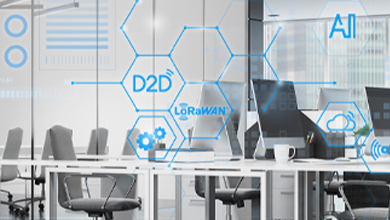

Milesight's smart occupancy solution tracks usage in meeting rooms, bathrooms, and workstations for effective office space management.
Smart Occupancy Solution for Workplaces and Beyond
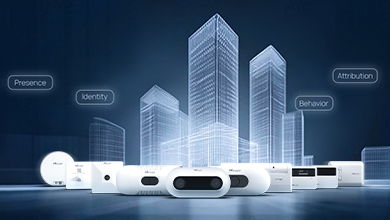
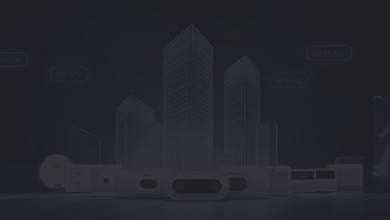
Beyond people counting and occupancy, presence, behavior, identity, and attributes—all people-related aspects—can bring data-driven insights to your smart building.
Transforming Smart Buildings with Milesight People Sensing Series
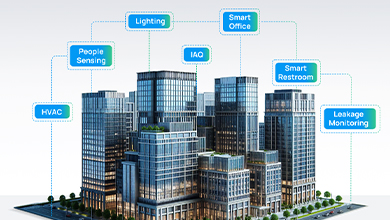
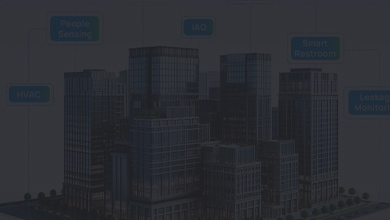
Milesight's smart building sensors, from occupancy to air quality and light, enable seamless monitoring and responsive building management.
Smart Building Sensors: A Comprehensive Guide for Facility Managers
